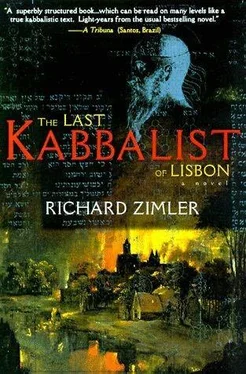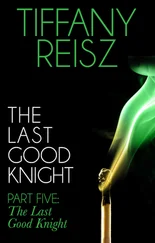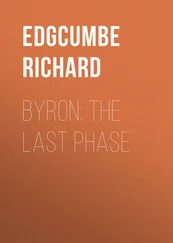Richard Zimler - The Last Kabbalist of Lisbon
Здесь есть возможность читать онлайн «Richard Zimler - The Last Kabbalist of Lisbon» весь текст электронной книги совершенно бесплатно (целиком полную версию без сокращений). В некоторых случаях можно слушать аудио, скачать через торрент в формате fb2 и присутствует краткое содержание. Год выпуска: 1998, Издательство: Arcadia Books, Жанр: roman, Исторический детектив, Философия, на английском языке. Описание произведения, (предисловие) а так же отзывы посетителей доступны на портале библиотеки ЛибКат.
- Название:The Last Kabbalist of Lisbon
- Автор:
- Издательство:Arcadia Books
- Жанр:
- Год:1998
- ISBN:нет данных
- Рейтинг книги:5 / 5. Голосов: 1
-
Избранное:Добавить в избранное
- Отзывы:
-
Ваша оценка:
- 100
- 1
- 2
- 3
- 4
- 5
The Last Kabbalist of Lisbon: краткое содержание, описание и аннотация
Предлагаем к чтению аннотацию, описание, краткое содержание или предисловие (зависит от того, что написал сам автор книги «The Last Kabbalist of Lisbon»). Если вы не нашли необходимую информацию о книге — напишите в комментариях, мы постараемся отыскать её.
The Last Kabbalist of Lisbon — читать онлайн бесплатно полную книгу (весь текст) целиком
Ниже представлен текст книги, разбитый по страницам. Система сохранения места последней прочитанной страницы, позволяет с удобством читать онлайн бесплатно книгу «The Last Kabbalist of Lisbon», без необходимости каждый раз заново искать на чём Вы остановились. Поставьте закладку, и сможете в любой момент перейти на страницу, на которой закончили чтение.
Интервал:
Закладка:
Richard Zimler
The Last Kabbalist of Lisbon
For Alexandre Quintanilha
With thanks to Ruth G. Zimler, Gary Pulsifer, Judith Ravenscroft, Timothy Hyman, Quetzal Editores of Lisbon and Ross Bradshaw of Five Leaves Publications
Historical Note
In December of 1496, four years after Ferdinand and Isabella of Spain expelled all the Jews from their kingdom, King Manuel of Portugal was convinced to do the same. In exchange, he was to receive from the Spanish monarchs the hand of their daughter in marriage. Just before the expulsion order was to take effect, however, King Manuel decided to convert the Portuguese Jews rather than lose such valuable citizens. In March of 1497, he closed all ports of disembarkation and ordered the Jews rounded up and dragged to the baptism font. Although accounts have reached us of some Jews who committed suicide and murdered their children rather than become Christians, most did indeed agree under coercion to accept Jesus as the Messiah. Called New Christians, they were given twenty years to lose their traditional Jewish customs, a promise which proved hollow over the next two decades of prejudice and imprisonment. Even so, many of the New Christians persisted in their beliefs. In secret and at great risk, they said their Hebrew prayers and practiced their rituals, in particular those related to the observance of the Sabbath and the celebration of Jewish holidays. One such secret Jew was Berekiah Zarco, the narrator of The Last Kabbalist of Lisbon.
The Last Kabbalist of Lisbon
Author’s Note The Discovery of Berekiah Zarco’s Manuscript
Abraham Vital, a lawyer in private practice in Istanbul, makes a living petitioning the Turkish government to win benefits for persons who, because of injury or illness, can no longer work. In 1981, he waged a successful legal battle on behalf of a fifty-nine year old carpenter named Ayaz Lugo whose right arm and hand were paralyzed in a car crash.
Lugo died in June of 1988. His wife had already passed away six years earlier. They were childless. In his will, a grateful Lugo left Abraham Vital his home.
I was to stay in Lugo’s house during the seven-month sojourn I spent in Istanbul in 1990 researching Sephardic poetry, in particular, the ballad form. It was graciously offered to me rent-free by Abraham Vital; he and I became acquainted through a mutual friend, my thesis advisor Dr. Isaac Silva Rosa, formerly of U.C. Berkeley and now of the University of Porto in Portugal.
Both Vital and Lugo are Sephardim, descendents of the waves of Jews who fled persecution in Spain and Portugal in the 15th, 16th, 17th and 18th centuries. Their ancestors had been offered exile in Istanbul—then known by Christians and Jews as Constantinople—as early as 1492. In that year, Turkish Sultan Bejazet II welcomed to his kingdom thousands of Sephardic Jews who were complying with an expulsion order issued by King Ferdinand and Queen Isabella of Spain.
On a stifling day in early May, Vital drove me to Ayaz Lugo’s ancient home at the fringes of Istanbul’s medieval Jewish Quarter, the Balat. Two stories of stone and flaking stucco rose up like an abandoned watchtower between a bakery and record store.
I moved in on May 9, 1990. Inside, everything appeared gray-brown, as if in a sepia photograph, until I started removing the dust.
I could touch the sagging ceilings of both floors of the house without standing on my toes. Cones of light filtered in to my bedroom through oval, platter-size windows. The furniture was of heavy, time-worn wood, pieces evidently purchased when Lugo was a boy; now all antiques.
In my bedroom closet I found thousands of sugar cubes neatly stacked in leather suitcases. Apparently, it had been scarce during World War II. Were the cubes already packed away in case Lugo had to make a quick exit? Maybe Jews should always have at least one suitcase prepared, I thought.
In a worm-eaten dresser, under cotton underwear, I found rancid Turkish chocolate bars. I was pleased; Lugo and I undoubtedly shared a sweet tooth.
My bed was an iron frame with a squashed mattress manufactured in Konya. The script of the tag was in Arabic, making it about seventy years old; in the 1920s, the Latin alphabet replaced the Arabic one throughout Turkey.
The house had no shower. One sink gave a thin stream of cold brown water that smelled of chlorine and rust. Lugo and his wife must have gone to the baths.
I had many companion mice. But miraculously, there were no ants and no bedbugs.
That July, Abraham Vital decided to begin bringing the house up to 20th-century, Western standards. Remodeling began with the cellar so that I wouldn’t be too disturbed.
On July 18, workmen came across a secret lair, two-feet deep and four-feet square, which had been covered with wood planks and a cement casing. Inside this hiding place sat a tik, the small cylindrical chest used by Sephardic Jews to house the Torah, the first five books of the Old Testament. Decorated with elaborate silver filigree and enamel peacocks, it was found to contain not a Torah, but a leather-bound set of handwritten manuscripts, nine in all.
The manuscripts were in the square, Hebrew script typical of Iberia, the language largely Jewish-Portuguese—an old Portuguese written in Hebrew characters. Portions of the early works, however, were in medieval Hebrew itself. The writing was done with a calamus, the reed pen used in Iberia. The paper was in excellent condition.
All but three of the manuscripts bore polished vellum covers on which a title is illuminated with bird-headed letters. Hoopoes, owls, thrushes, European goldfinches and peacocks predominate. One species of hummingbird (remarkably, a New World family of birds) is also pictured. Lacy, intricate geometrical patterns and arabesques form the backgrounds to titles. Gold leaf is used liberally. A bright carmine and the blue of lapis lazuli are the dominant colors.
I found that all of the manuscripts were signed in a careful script in the form of an Egyptian ibis by a man named Berekiah Zarco. From the dates penned next to his signatures and references in the text, we know that they were written over the course of twenty-three years, from 5267 to 5290 in the Hebrew calendar—1507 to 1530 CE.
On the night of July 18, 1990, I began reading his work.
What I found were six treatises on various aspects of the kabbalah, the mystical philosophy which radiated out into the Jewish diaspora from Provence in the early Middle Ages and which has been passed down in subsequent centuries both orally and in texts. The most well known of these kabbalistic texts are the Bahir and the Zohar.
Three of Berekiah’s manuscripts—those without title pages—were of a secular nature, however. Bound together by a leather strap, the first dated from 1507 and the last two from 1530. Right from my first inspection, it was evident that they concerned the Lisbon massacre of April 1506. Some two thousand New Christians—Jews forcibly converted to Christianity in 1497—lost their lives in that riot, many burned in the Rossio, the square that still centers the Portuguese capital.
Unfortunately, numerous sections and even single pages of Berekiah’s manuscripts had been reassembled out of order by someone undoubtedly unable to read Jewish-Portuguese. It was maddening. Two months of rearranging were involved. Once back in order, however, Berekiah Zarco’s work read smoothly.
The three historical manuscripts taken together form a single work telling the story of Berekiah’s family during the tragic events of April 1506. In particular, they recount Berekiah’s search for the killer of his beloved Uncle Abraham, a renowned kabbalist who is likely responsible for some of the hitherto unattributed works of the Lisbon School, including—for reasons that become clear in the story— Knocking on Doors and the Book of Divine Fruit.
Читать дальшеИнтервал:
Закладка:
Похожие книги на «The Last Kabbalist of Lisbon»
Представляем Вашему вниманию похожие книги на «The Last Kabbalist of Lisbon» списком для выбора. Мы отобрали схожую по названию и смыслу литературу в надежде предоставить читателям больше вариантов отыскать новые, интересные, ещё непрочитанные произведения.
Обсуждение, отзывы о книге «The Last Kabbalist of Lisbon» и просто собственные мнения читателей. Оставьте ваши комментарии, напишите, что Вы думаете о произведении, его смысле или главных героях. Укажите что конкретно понравилось, а что нет, и почему Вы так считаете.












